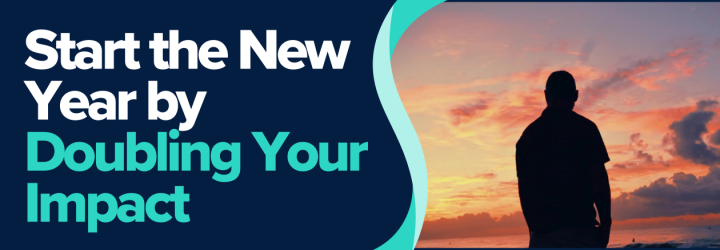
Opioid Overdose Reversal
Learn how naloxone works, where to get it, and how to use it to save a life.
Opioid overdoses do not have to be fatal.
Naloxone is a safe, FDA-approved medication that has been proven to reverse opioid overdoses in minutes. Also known by brand names Narcan or Evzio, this medication comes in the forms of a nasal spray and an injection.
How does naloxone work?
Opioids, like OxyContin or heroin, bind to specific receptors in the brain, spinal cord, and gastrointestinal tract. That process minimizes the body’s perception of pain and causes feelings of euphoria—but it also affects other systems, like those responsible for regulating mood, blood pressure, and breathing. During an overdose, the opioid depresses the respiratory system so much that breathing stops completely, which is what can make an overdose fatal.
Naloxone can reverse an opioid overdose in a matter of minutes.
Naloxone is an opioid antagonist. That means naloxone binds to the same receptors as the opioid, displacing the opioid in the process and temporarily undoing its harmful effects. After naloxone has been administered to a someone experiencing an overdose, they can begin breathing again within a matter of minutes.
Who’s at risk of an opioid overdose?
- People who are addicted to prescription or illegal opioids
- People who take prescription opioids, especially in high doses
- People who use alcohol, anti-depressants, or benzodiazepines (like Xanax) in addition to opioids
- People who’ve recently stopped using opioids, and those in early recovery from opioid addiction (Why? Because a newly lowered tolerance for the drug means that any recurrence in use could be fatal)
How to spot on opioid overdose
If you spot these signs, it may be time to use naloxone.
- Blue or grey lips or fingertips
- Snoring or gurgling
- Pinpoint pupils
- Unresponsiveness or severe sleepiness, meaning you can’t wake the person up with a loud voice or a firm rub on the center of their chest
- Breathing problems, including slow or shallow breathing
- Floppy arms or legs
How to use naloxone
Watch this virtual naloxone training with Shatterproof Ambassador Danica Dvorachek.
Research shoes that bystanders are more likely to be called upon to use naloxone than CPR. With that in mind, there's one simple thing you can do to save lives: carry naloxone. Will you take the pledge to carry naloxone?
How to get naloxone in your community
If you or someone you know uses opioids, be sure to visit the Harm Reduction Coalition’s naloxone finder. It’s intended to directly connect people who use drugs with free naloxone and other harm reduction supplies, like syringes.
Ask your local health department about naloxone programs.
Depending on where you live, you may be able to access free or low-cost naloxone kits through community organizations. Access varies, but cities and towns across the country are working to expand programs like this. Your local health department can refer you to community-based naloxone distribution programs.
How to get naloxone at the pharmacy
Two FDA-approved naloxone products are available in pharmacies: a nasal spray (Narcan) and an auto-injector (Evzio). These medications are available in most states without a prescription. If you're unsure what the rules are where you live, SAFE Project provides state-by-state information on naloxone regulations and access. If you live in a state that does require a prescription, talk to your primary care physician.
Walmart, CVS, and Walgreens all carry naloxone. You may want to call your local pharmacy before you visit to make sure they have it in stock and ready for pick up. If they don't have it on hand, ask them to order it for you.
Anyone in the position to save a life is able to buy naloxone from the pharmacy.
You may find the pharmacy staff unaware of, or confused about, naloxone protocol. So remember: Anyone in the position to save a life is able to buy naloxone from the pharmacy—the dose does not have to be for you, specifically. And many insurance plans will cover the cost, so if the pharmacist tells you it's not covered, call your insurer before paying full price.
Narcan can cost $20–$125 for a two-pack, depending on insurance coverage. Coupons may be available from the manufacturer or from your pharmacy. On Narcan’s website, you can enter your zip code for detailed information on how to obtain the medication in your state, and how much you can expect to pay.
Evzio’s auto-injector of naloxone is available to commercially insured patients for free. They also offer cost-assistance programs for people without insurance. Visit their website for more details.
Broader access to naloxone saves lives
The World Health Organization, United States Surgeon General, American Medical Association, and many more public health officials and world leaders support getting naloxone into as many hands as possible.
Stigma should never guide public health policies. Science should.
Naloxone access programs across the country have saved many thousands of lives. Still, some suggest that naloxone access just encourages people to use drugs. Several studies have demonstrated that this is simply not true. Saving lives with naloxone has shown no increase in opioid misuse or overdoses.
The truth is that naloxone is a safe, effective, lifesaving emergency response tool—just like an EpiPen or an inhaler. Everyone in the position to save a life should carry naloxone: First responders, health care workers, and everyday people who may witness an overdose. It’s a caring and responsible thing to do.
#ReverseTheSilence
Add your voice to this national awareness campaign for overdose preparedness.
Preventing Infections
People who inject drugs are at risk of hepatitis, HIV, cotton fever, and other infections. Here’s how to stay safe and reduce risks.
Medications for Addiction Treatment (MAT)
Learn how addiction medications work and why they're still so hard to access, despite the evidence.

